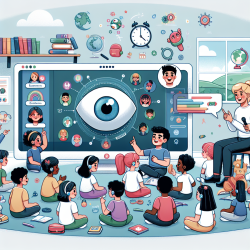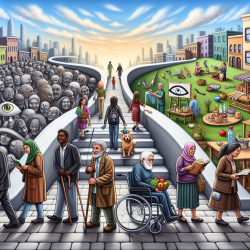Introduction
The COVID-19 pandemic has reshaped our relationships with the spaces we inhabit, forcing us to reconsider the significance of place in our daily lives. For special education practitioners, understanding these changes is crucial in providing effective support to students. The research article "Re-placed" - Reconsidering relationships with place and lessons from a pandemic, offers insights that can enhance our approach to therapy and education in this new landscape.
Theoretical Framework
The article introduces three interdependent axes to understand our relationship with place: emplacement-displacement, inside-outside, and fixity-flow. These concepts are not only relevant to the pandemic but are inherent to how we relate to our environments. As educators, recognizing these dynamics can help us create more inclusive and supportive learning spaces, whether physical or virtual.
Implications for Special Education
Several implications from the research are particularly relevant to special education:
- Home-making and Un-making: The pandemic has transformed homes into multifunctional spaces. Educators can support families by providing resources that help balance educational needs with the home environment.
- Oppressive “Homing” and Socio-spatial Precarity: Understanding that not all students have equal access to safe and conducive learning environments is crucial. Tailoring support to address these disparities can improve educational outcomes.
- New Politics of Public Space: As public spaces become redefined, educators can advocate for inclusive designs that accommodate the needs of all students, including those with disabilities.
Virtual Learning and Place
The shift to online learning has highlighted the fixity-flow dialectic, where the static nature of home learning environments contrasts with the dynamic potential of digital platforms. Practitioners should explore how virtual spaces can be optimized to foster a sense of place and community among students.
Encouraging Further Research
The article identifies key questions for future research, such as how the pandemic has altered our relationships to home and public spaces. Special education practitioners are encouraged to engage in or support research that explores these questions, as they hold the potential to inform more effective educational practices.
Conclusion
By integrating the insights from this research into practice, special education professionals can better navigate the complexities of place in the post-pandemic world. This understanding will not only enhance the delivery of online therapy services but also support the holistic development of students.
To read the original research paper, please follow this link: "Re-placed" - Reconsidering relationships with place and lessons from a pandemic.










